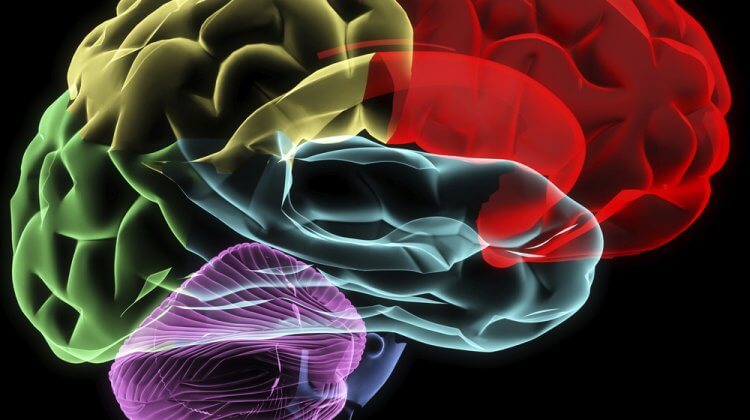
9. Discussion of Major Methodological Issues in Anabolic Steroid Research
As noted previously, any attempt to evaluate and summarise the psychological and behavioural effects associated with the use of anabolic-androgenic steroids is complicated by the numerous methodological shortcomings of many of the investigations, including inappropriate sampling strategies, lack of adequate control groups, use of several types, doses and length of administration of anabolic-androgenic steroids, and a variety of techniques used to assess the psychological and behavioural outcomes.
9.1 Sample Selection and Size
A significant number of studies did not control for or report family or previous personal history of mental illness and /or aggressive behaviour, thereby resulting in a possible selection bias in the study population. In addition, selection of physically and/or mentally ill patients, persons, volunteers, etc. as subjects, raises the question of the generalisability of the findings to otherwise healthy individuals. Many of the studies reviewed here have been conducted with small sample sizes, thus reducing the statistical power available to detect significant differences. Furthermore, small sample sizes have precluded examination of steroid effects in additional subgroups such as age, race, gender, educational level and social class. Small sample size makes it difficult to control for potential confounding variables using multivariate statistical techniques. Sampling of blood and urine was inconsistent among studies, and often unreported, with respect to timing and multiple samples were often not obtained.
9.2 Control Subjects
A number of studies failed to incorporate control groups. Subjects who act as their own controls in a repeated measures design would be a possible exception. Many studies, for ethical and legal reasons, did not randomly assign subjects to treatment, use comparable reference groups, or take advantage of single- or double-blind designs.
9.3 Steroids Investigated
Not all anabolic-androgenic steroids are the same; significant variation among anabolic-androgenic steroids regarding acute physical effects has been noted (Herrmann & Beach 1976; Kruskemper 1968; Williams 1981), and Bardin et al. (1990) have reported that there is significant individual variation in response to the same androgen and dose.
Kochakian (1990) has also pointed out the possibility that adverse reactions may represent toxic responses in some individuals. Caution must be exercised when attempts are made to generalise the psychological and behavioural effects (findings) from a study using one type of anabolic-androgenic steroid to a different steroid used in another study. Also, while reporting the average steroid dose used, some studies failed to examine or report any dose-response relationship. In addition, even when dosage was provided, estimating the bioavailability equivalence between oral and injectable anabolic-androgenic steroids is difficult. Moreover, in hypogonadal patients it appears that oral anabolic-androgenic steroids are the only type of anabolic-androgenic steroids that produce positive mood changes, although the doses of injectable steroids administered in these studies often tended to be below those required to restore and maintain normal plasma testosterone levels. In other users (athletes) it is the oral anabolic-androgenic steroids that are associated with the adverse psychological changes.
Svare (1990) has also stated that another important variable determining the effectiveness of anabolic-androgenic steroids in promoting aggressive behaviour is whether the anabolic-androgenic steroids are aromatisable. Furthermore, the measurement of the concentration of anabolic-androgenic steroids or other drugs in biological samples has not been performed in subjects whose behaviour has been observed or changed according to self-report. Finally, since as much as 50 to 80% or more of the anabolic-androgenic steroids used by athletes may have been obtained from black market sources (Frankle et al. 1984; Yesalis et al. 1988; unpublished data, our laboratories), case reports of individuals using these drugs must be evaluated accordingly given the absence of knowledge concerning their actual content.
9.4 Assessing Aggression and Aggressive Behaviour
Defining aggression and assessing aggressive behaviour is itself difficult. As stated by Kreuz and Rose (1972), ‘Behaviors encompassed by the common usage of the term “aggressive” range from normal assertive and coping behaviours to acts of violence.’ The term ‘aggression’ includes a diverse category of phenomena including behavioural, emotional, and motivational aspects. Aggression may be expressed in many ways. It may be overt (e.g. cursing) or covert (e.g. gossiping), direct (e.g. physical assault) or indirect (e.g. verbal hostility). Various definitions and theories of aggression have been proposed (Bandura 1973; Berkowitz 1962; Lorenz 1966). While one definition suggests that aggression is ‘any sequence of behavior, the goal of which is to do injury to the person toward whom it is delivered’ (Dollard et al. 1939), the intentions of the aggressor, whether to commit injury or to achieve a reward, are critical factors (Dollard et al. 1939). Social learning theory proposes a comprehensive model that includes as causative factors the immediate and long term social setting as well as the emotional and cognitive combination of aggressor and victim (Bandura 1973). The significance of imitation, modelling, and future rewards attached to expressing aggressive behaviours, especially in sports, must also be considered (Bandura 1973).
9.5 Psychological Inventories
Since a variety of psychological inventories were used (Buss-Durkee Hostility Inventory, Minnesota Multiphasic Personality Inventory, Profile of Mood States, etc.) across studies, comparability of findings between studies is difficult. In some cases, nonstandardised and/or unpublished inventories were used. As a result, some of the questionnaires may have been inadequate for detecting behavioural change. In addition, if inventories such as the BDHI assess the trait of hostility and not the state of hostility, it is possible that testosterone level is not correlated with the enduring personality characteristics of hostility but rather with the temporary state of hostility. Although long term high dose use may elicit lifestyle changes, it is worth noting that witnesses involved in criminal proceedings against anabolic-androgenic steroid users often comment that ‘He became a different person…after beginning anabolic-androgenic steroid use’ (Conacher & Workman 1989; Editorial 1989; Katz & Pope 1990; Lubell 1989; Moss 1988). In general, however, as Rose (1974) has pointed out, it is more likely that testosterone (or anabolic-androgenic steroid concentration in general) is correlated more with assertiveness or an action orientation than with assaultive, combative, or violent physical or verbal aggression.
9.6 Self-Reported vs Observed Alterations in Behaviour
An overriding concern is the accurate documentation of any change in behaviour with anabolic-androgenic steroid use. No studies of actual behaviour (e.g. aggressive behaviour) while in athletic competition have been reported. Some studies were unclear regarding how changes in behaviour associated with anabolic-androgenic steroid use were determined. It is possible that some of the behavioural differences reported resulted from some investigations relying upon self-reports and other self-defined (user and researcher) measures of behavioural change (inventories and diaries), while others used observers and/or interviews to document behavioural changes. Consequently, aggressive feelings that failed to manifest as aggressive actions may have either gone unrecognised or been overreported. Zuckerman et al. (1967) have reported that the sum of the hostility responses from the BDHI is significantly related to clinical ratings of hostility based on both observed and inferred estimates. However, despite this evidence that self-report and observational data tend to concur, it is possible that experimental subjects attempt to present themselves in a particular light for various reasons, including fulfilling their perceptions of the experimenter’s expectations.
Both prospective and retrospective methods have been used to evaluate the psychological and behavioural effects of anabolic-androgenic steroids. However, any review of this topic must remain tentative due to the diversity of study designs and results. Conclusions drawn from earlier research and referred to in subsequent studies and reviews are frequently misleading because the results have been incorrectly interpreted originally or in secondary sources. Many of the reported behavioural effects have come primarily from studies using a small number of subjects, in which patients were administered anabolic-androgenic steroids for a variety of clinical conditions and these have found positive or unchanged moods and behaviour. Extremely small numbers of athletes have been studied, and the findings derived from patient populations can only be generalised to athletes with caution, particularly since athletes are known to use several drugs concurrently (Frankle et al. 1984), and to use black market drugs (Buckley et al. 1988; Burkett & Falduto 1984; CVM Update 1987; Frankle et al. 1984; Windsor & Dumitru 1989), the content of which may be suspect. Finally, the interaction effects of anabolic-androgenic steroids and environmental factors, stress levels, and often drugs of various types, including analgesics, anti-inflammatories, alcohol and other psychoactive substances, on feelings and behaviour remains unresolved in humans.
10. Conclusions
The few investigations conducted, primarily in prisoner populations, have shown a significant positive relationship between endogenous testosterone levels and aggressive behaviour. However, the questions of the extent of the relationship and of the interaction between testosterone and aggression remain unanswered. Do elevated testosterone levels result in more aggressive behaviour or does more aggressive behaviour cause testosterone levels to increase? In addition, what effect does the interaction of physical activity and an emotionally-charged environment (which not only reinforces but demands high levels of direct physical, and often, verbal aggression) have on testosterone production and behaviour? We do not even know the frequency or extent to which males become androgen-deprived as they age or the consequences for longevity or quality of life. Future research will undoubtedly need to examine the positive psychological effects of anabolic-androgenic steroid use as has occurred in the majority of patient samples. There may be significant numbers of individuals whose mental health has been improved through anabolic-androgenic steroid use.
Both medical and legal concerns regarding the psychological and behavioural effects of anabolic-androgenic steroids have been raised. Unfortunately, objective evidence documenting the short term psychological and behavioural changes accompanying and following anabolic-androgenic steroid use by athletes is extremely limited and is inconclusive. As indicated, many of the studies in this area suffer from methodological inadequacies such as small sample size, use of nonstandardised psychological inventories, and lack of appropriate control groups, among others. No acute adverse effects on mood or behaviour have been observed in individuals self-administering or clinically treated exclusively with non-17µ -alkylated anabolic-androgenic steroids, suggesting that these effects may be unrelated to androgenic actions but rather the result of nonandrogenic properties arising from the 17µ -alkylation and/or from binding to other than androgen receptors (Bardin et al. 1990; Friedl 1990; Janne 1990), or from interactions with other drugs. As Yesalis et al. (1989b,c, 1990a,b) and Cicero and O’Connor (1990) have pointed out, extremely little is known about the long term health impact of anabolic-androgenic steroids and their interactions with other drugs including drugs of abuse. Consequently, the need for much additional research is strongly indicated.
Although some athletes and coaches believe that anabolic-androgenic steroids exert a positive effect by enhancing performance through altered psychological states, others point out the potential negative effects of violent and aggressive behaviour. With present estimates of a million or more users in the US, an extremely small percentage of anabolic-androgenic steroid-using athletes appear to experience mental disturbances which result in their seeking clinical treatment, and of those who do, some may already suffer from existing mental health and/or substance abuse problems. At this point a cause-effect relationship has yet to be established. Moreover, of the seemingly small population of individuals who do experience significant psychological and behavioural changes, most apparently recover without legal or other problems when the use of androgens is terminated.
Originally appearing in Sports Medicine 10(5) 303-337. 1990. Copyright © 1990 by Adis International Limited. All rights reserved. Reprinted by MESO-Rx with permission. Any duplication of this document by electronic or other means is strictly prohibited.
About the author
Warning: Undefined variable $show_related in /home/thinksteroids/public_html/wp-content/plugins/molongui-authorship/views/author-box/parts/html-tabs.php on line 30



14 replies
Loading new replies...
Join the full discussion at the MESO-Rx →